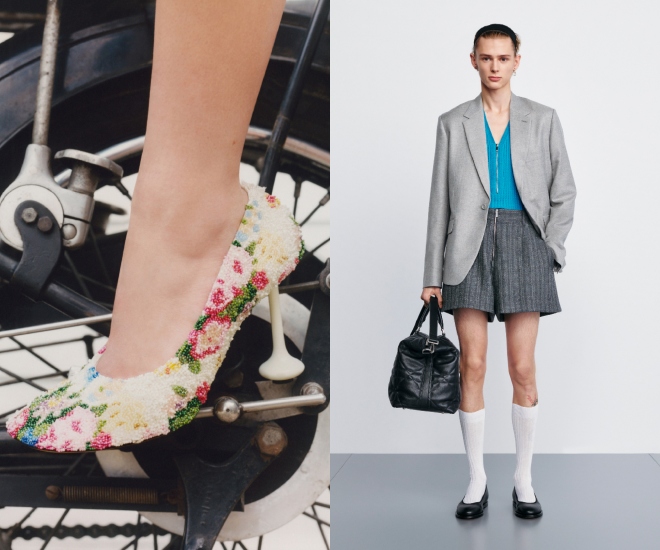In March, LUXUO examined how the fashion sector is transforming due to the departures of longstanding creative heads, an approaching economic slump, and reduced sales compelling brands to broaden their product lines. As the year progresses, these transitions persist, with significant changes shaping the industry: Hedi Slimane’s exit from Celine, Kim Jones’ departure from Fendi, Sarah Burton’s shift from Alexander McQueen to Givenchy, Alessandro Michele’s move to Valentino, and Haider Ackermann taking over for Peter Hawkings at Tom Ford after only one year. Perhaps the most unexpected shift was Virginie Viard’s abrupt exit from Chanel in June, followed by speculation that Marc Jacobs was considering the prestigious position, potentially aiming to reshape the brand’s legendary status. Amid these disturbances, LUXUO has also pointed out that the challenge of maintaining profit has increasingly focused on the beauty sector. Now, let’s focus on fashion brands assessing their internal structures, refining their core products to maneuver through this time of uncertainty. This season’s launches reflect a strategic shift, as brands aspire to evoke resonance through their classic designs that can weather the financial storm.
Read More: Sales-Focused Fashion Industry Turns to Beauty
New Bags, Classic Motifs
At Dior, the maxicanage motif embellishes an exquisite collection of leather goods crafted in black or beige-grained leather. This maxicanage is a fresh take on the carnage motif, long synonymous with Dior’s allure, drawing inspiration from the light-colored cane that decorates the Napoleon III chairs in the brand’s haute couture salons. For the winter 2024/2025 men’s line, Kim Jones features the maxicanage on iconic Dior pieces such as the saddle twin and weekender.
Read More: New Season, Recharged Motifs
Similarly at Gucci, the evolution of the GG Marmont silhouette is evident in the fall/winter 2024 collection. The revival of the brand’s interlocking GG emblem serves to rekindle consumer memories of the brand, paying homage to its historical splendor during a period that necessitates strategic moderation. In the early 1970s, Gucci introduced a rounded version of its logo and the Gucci Blondie, which was later brought back by Sabato De Sarno and became a highlight at the Gucci Cruise 2025 show.
Read More: The Power and Relevance of Luxury Fashion Conglomerates
Touch of Tradition
In fashion, “contemporary” has become a term associated with innovation but arguably relates more to the art of reinvention. There’s a significant impact in refreshing a traditional garment, silhouette, or technique through a modern lens. At Tod’s, the Tod’s T Vintage draws inspiration from sneaker designs of the 1980s and 1990s, featuring the signature Tod’s Gommini pebble rubber sole sewn to the wedge, with the Tod’s logo hot-stamped on the shoe.
Alexander McQueen has revisited Scottish Tartan, a textile famously used by the late designer himself, including in the provocative autumn/winter 1995-96 Highland Rape collection. For 2024, Seán McGirr has re-engaged with this aspect of his Maison’s legacy, showcasing distressed finishes and raw edge details that capture the rebellious essence of the brand’s namesake. Coupled with bold statement sling bags, each item reflects McQueen’s unique talent for merging tradition with avant-garde flair. Both Tod’s, which has a legacy of transforming sneakers into symbols of refined craftsmanship, and Alexander McQueen, with its bold reinterpretation of Scottish tartan, highlight how fashion houses are revisiting and pushing the boundaries of their classic signatures, incorporating timeless elements into a contemporary setting and offering something novel.
Eye on Accessories
A return to house classics is just one element, but beyond cherished emblems and beloved motifs, maisons also emphasize exquisite techniques and outstanding craftsmanship. This season, LOEWE highlighted their leather craftsmanship alongside intricate caviar beading. Drawing inspiration from antique tapestries and Chelsea porcelain, the Squeeze bag emerges as a piece of art, adorned with songbirds, a cherished pet, vibrant florals, and botanical elements, each featuring over 20,000 beads meticulously layered using the ‘Aari’ technique to create a captivating 3D effect. A flower bouquet embellishes the Campo biker boot, with each pair requiring 360 hours of beading performed by 12 artisans. This technique is also applied to Toy pumps, a beaded pouch, and various beaded charms such as asparagus stalks, radishes, cabbage leaves, and ladybirds.
For Winter 2024, Bottega Veneta’s signature bags have been transformed using “Silky Calf Leather,” a uniquely thin and supple material resembling silk. The Andiamo bag makes its debut in this luxurious leather, featuring the Maison’s signature intrecciato pocket detail. A sculptural brass knot both embellishes and secures the braided bag straps, permitting the Andiamo to be worn across the body or over the shoulder. Meanwhile, the “Hop” bag diverges from traditional intrecciato craftsmanship to celebrate the soft, geometric form of the leather. Framed with leather trim, the Hop maintains its structure while embracing its triangular shape, crafted to be appreciated from any angle. Each piece is meticulously crafted by a single artisan over two days, ensuring both precision and artistry.
By revisiting and enhancing their iconic motifs and craftsmanship, brands are paving a sustainable path forward where heritage aligns with present demands. During this transitional phase, fashion is adapting beyond mere survival, embracing innovation and vision to redefine enduring signature elements.
For more on the latest in style and fashion industry insights, click here.

